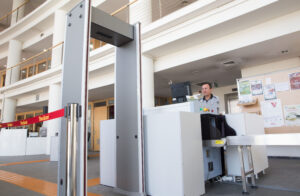Time Attendance Systems play a critical role in tracking and managing employees within organizations. These systems, which were previously manual and time-consuming, have become faster, more reliable, and flexible thanks to technological advancements. In this article, we will examine old and new Time Attendance Systems in detail to better explain the impact of this transformation on company operations.
Challenges of Old Time Attendance Systems
Handwritten Records and Laborious Controls
In old Time Attendance Systems, all processes were carried out manually. Employees’ check-in and check-out times were often recorded on paper or logged via signatures collected by supervisors. These methods created a time-consuming system prone to errors. Issues such as incorrect data entry, data loss, and irregularities were common.
Tracking and Reporting Issues
Recording working hours, leaves, delays, and absences required significant effort. Companies spent substantial human resources and time on these tasks. Additionally, tracking employee start times, breaks, and end times was complex.
Security and Privacy Lapses
Manual record-keeping systems frequently faced risks of lost, misplaced, or unauthorized access to information. This compromised company security and adversely affected trust among employees.
Data Loss and Physical Storage Issues
Paper-based records were vulnerable to physical damage or loss. The need for storage space and the long-term preservation of records posed major challenges, especially for large companies. Physical disasters like fires or floods often resulted in data loss.
Evolution of Time Attendance Systems Systems
Card-Based Access Systems
The first stage of Time Attendance Systems technology involved card-based systems using magnetic or proximity cards, simplifying personnel tracking. These systems marked a significant shift from manual records to electronic databases. However, lost or shared cards created security vulnerabilities.
Fingerprint Readers
After card-based systems, biometric technologies came into play. Fingerprint readers, which rely on unique biological data, made personnel tracking more secure. These systems eliminated risks like card loss or impersonation and were also used for access control in critical areas.
Facial Recognition Systems
The most advanced form of biometric verification, facial recognition systems, provided a structure that completely prevented misuse. These systems became indispensable for companies, especially during unexpected situations like the pandemic, as they could operate even with masks.
QR Code Readers
Next-generation Time Attendance Systems prominently feature QR code readers. These systems enable employees and visitors to perform check-in and check-out operations quickly and contactlessly. QR code reader solutions offered by Polimek Electronics can integrate with PIN codes and mobile applications. These systems not only ensure access control but also collect necessary data for easy reporting of transitions. They are particularly advantageous for areas with high traffic, such as hotels, schools, and offices.
Mobile Integration and Cloud-Based Systems
The integration of Time Attendance Systems with mobile devices provides managers with remote monitoring and control capabilities. Polimek Electronics’ mobile application for Time Attendance Systems ensures secure data storage while offering a centralized structure. This setup allows for data protection in the event of physical damage.
Advantages of New Time Attendance Systems
Digital Data Management
In new systems, all data is stored digitally, eliminating the need for physical files and ensuring secure backups. Digital data management creates a reliable information source for long-term analyses.
Operational Efficiency
Next-generation Time Attendance Systems speed up operational processes by eliminating manual tasks. All processes, from leave requests to entry-exit reports, can be completed within seconds.
Corporate Security and Control
Biometric systems and QR code readers enhance security by completely preventing unauthorized access. Access control to critical areas ensures that only authorized personnel can enter these spaces.
The Future of Time Attendance Systems
The future of Time Attendance Systems technologies is shaped by innovative technologies such as artificial intelligence and blockchain. AI-supported systems can analyze employee absenteeism to predict workforce needs in advance. Blockchain-based systems provide data security and transparency. The widespread adoption of contactless systems will offer hygienic solutions, improving user experience.
New technologies will transform Time Attendance Systems systems from a mere personnel tracking tool into an integrated management solution. Innovations like QR code readers will continue to lead this transformation.
This technological evolution will accelerate companies’ digitalization journeys, making business processes more efficient and providing a competitive edge.






